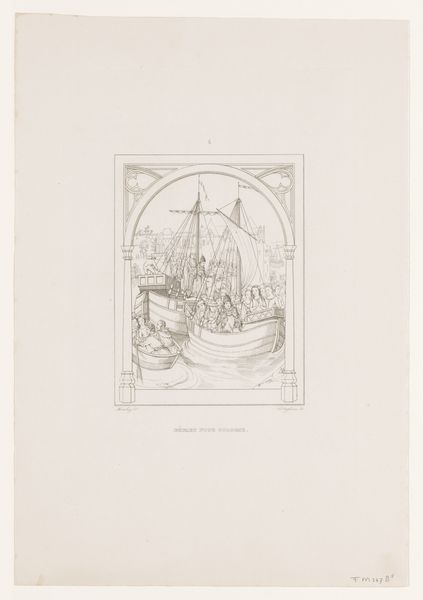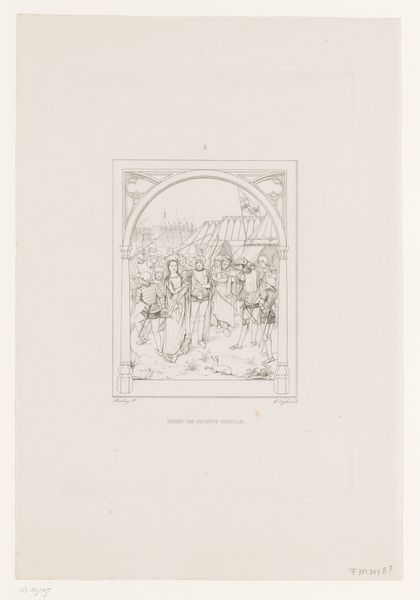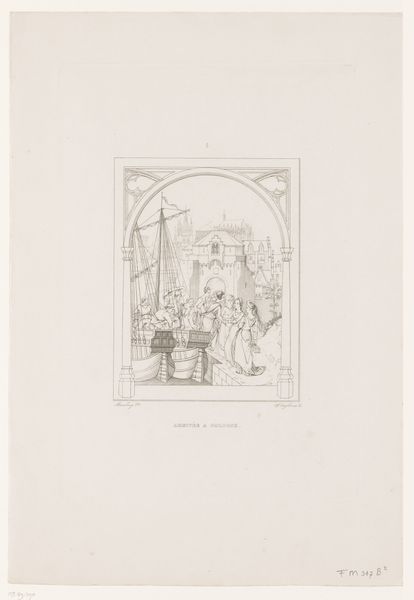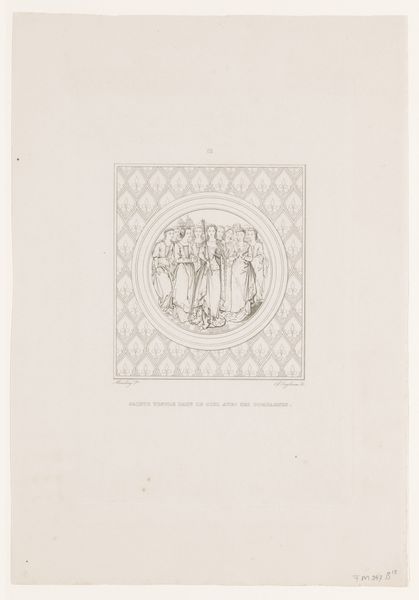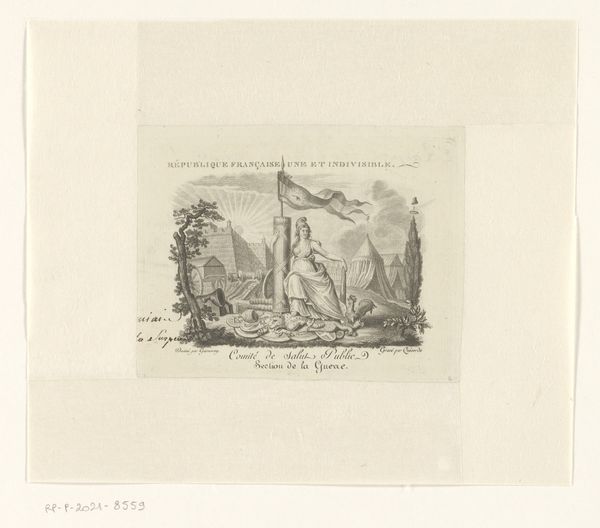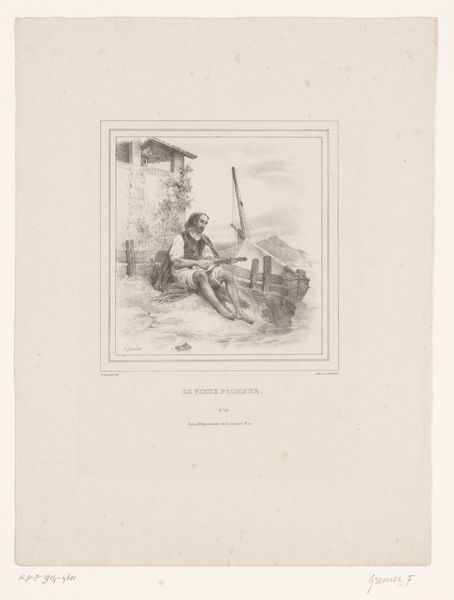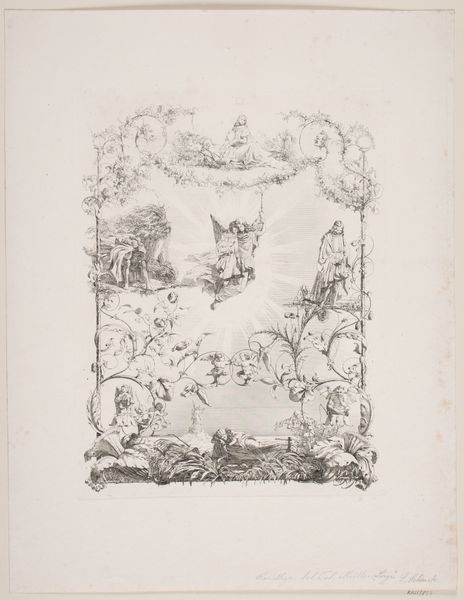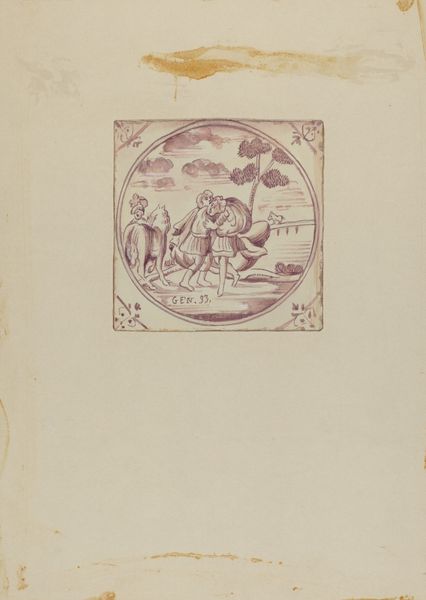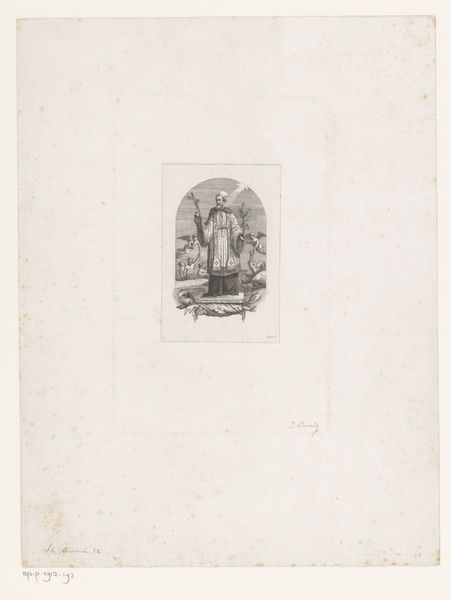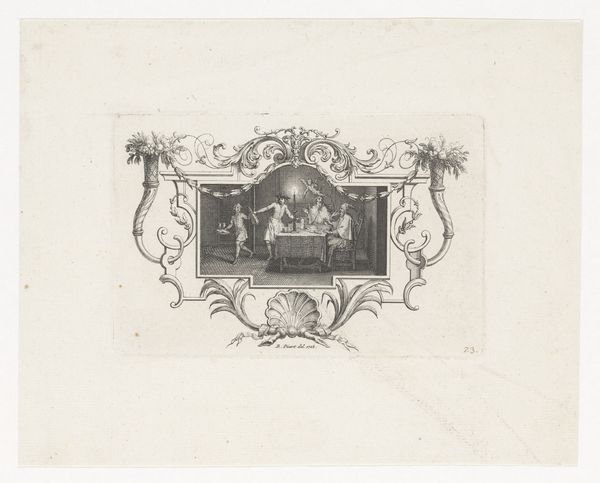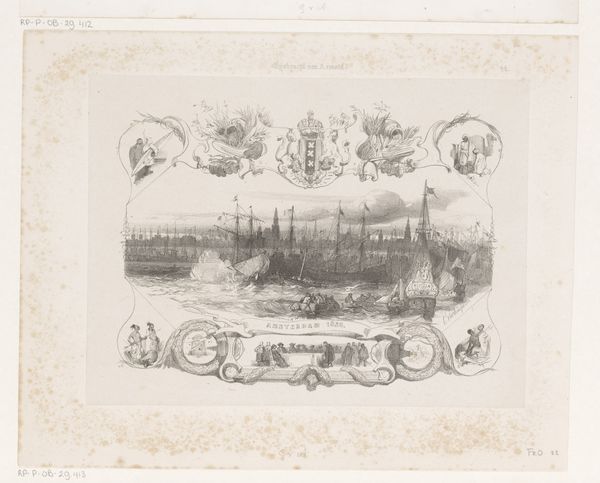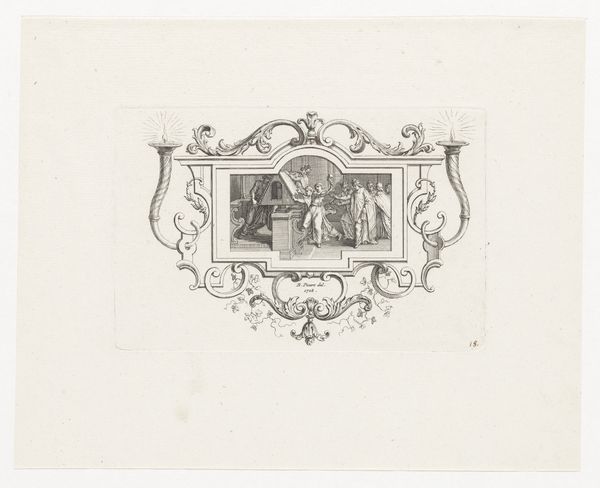
drawing, print, etching
#
drawing
#
ship
# print
#
etching
#
landscape
#
etching
#
genre-painting
Dimensions: height 275 mm, width 187 mm
Copyright: Rijks Museum: Open Domain
Editor: Here we have Charles Onghena's "Ontscheping in Bazel," created in 1841. It looks like an etching or a print of some kind, depicting two ships side-by-side with people disembarking. I'm struck by the detail in the architectural framing. What captures your attention in this work? Curator: Immediately, I see an engraving focusing on transportation, industry, and labor. Note the etching technique – think about the laborious process involved in creating this reproducible image. How many hands touched this artwork and what materials were used? The materiality of the etching – the metal plate, the ink, the paper – all contribute to its meaning. What social functions might an image like this have served in 1841? Editor: That's a fascinating way to look at it! So you're less concerned with the romantic landscape and more focused on the means of its creation? Curator: Precisely! The scene depicts ships in port, but it's essential to analyze how this image functioned as a commodity. Etchings like this would have been relatively accessible, acting as both art object and a document of their time. Who was the consumer and how did the work impact their understanding of progress, transport, and industry? Editor: That shifts my perspective entirely. So it's less about the beautiful scene, and more about what that scene represents in terms of the labor and consumption of imagery. Curator: Exactly! Consider it as evidence of both artistic skill and the larger forces of manufacturing and distribution. Editor: I hadn't considered that the accessibility and spread of this piece can carry meaning. Thank you for revealing the material factors that shape this image. Curator: A pleasure. Hopefully, this perspective makes you rethink what value we attribute to it.
Comments
No comments
Be the first to comment and join the conversation on the ultimate creative platform.
